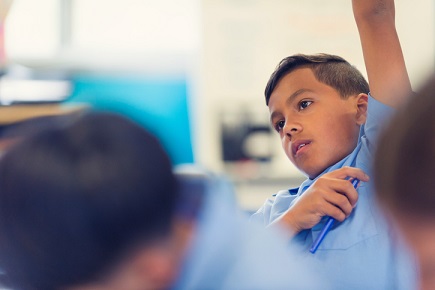
However, there has been little progress, with some areas stagnating and others even going backwards.
Dyonne Anderson is the president of the National Aboriginal and Torres Strait Islander Principals Association (NATSIPA) and Chief Operation Officer at the Stronger Smarter Institute
Anderson says the targets for education show “modest improvements” in pre-school enrolment, 15-18 year olds at high school, Year 12 completion, tertiary education and employment outcomes in education.
“If students are attending school earlier and staying longer, then we expect life improvements. The numbers may be increasing but there are many other elements which are not being captured,” Anderson told The Educator.
“Are students engaged with learning? Are students skilled for employment? Is it culturally affirming? There is much more work to be done to highlight learning and transparency around the data collected by the government to determine what really works and what doesn’t.”
According to the latest figures, only 1% of Australian educators are Aboriginal and Torres Strait Islander, yet Indigenous students represent 5.3% of the student population, and growing every year
Anderson called for a better balancing in terms of the representation of the profession to provide “real equality of opportunity in education”.
“It is necessary for Aboriginal and Torres Strait Islander students to see teachers and principals that look like them and come from similar environments,” Anderson said.
“With a strategic and deliberate approach from education departments it would make sense to identify, support, train and employ more quality Aboriginal and Torres Strait Islander teachers.”
Anderson said serious student behaviours are reduced “when our teachers are in classrooms and leading schools”.
“This is a perfect opportunity to invest in a priority workforce employment strategy that Aboriginal educators lead,” Anderson said.
“Aboriginal students need to see what they can be.”
Stronger Smarter Institute CEO, Darren Godwell, says the teaching profession has begun a “transition phase”.
“That’s something we welcome and are in a position to embrace,” Godwell told The Educator.
“There are plenty of challenges, but also opportunities to engage and enhance Indigenous student outcomes, in fact all student outcomes, for life in the new world.”
Godwell said the diversity of Australia’s classrooms offers an opportunity to build interest in Indigenous culture and education that “connects the local with the global”.
According to enrolment projections, more than 100,000 Indigenous children are expected to arrive in schools this month – a challenge that Godwell said reflects “a positive reality that principals need to know about”.
“We know that many school leaders are preparing for it from the Stronger Smarter Institute’s growth. In the past three years, we have had an unprecedented 80% plus demand for our signature leadership program for educators,” Godwell said.
“Systemic change starts with awareness, a confidence to act and the integrity of school leaders to cater for this large influx of Indigenous students – we believe in their ability and that's why we empower them with the skills and knowhow.”
Godwell said “transformation begins with a simple choice”.
“Do you want to do the best for your school and all its students? If you want better educational outcomes then we’re ready to partner with even more schools to create that change,” Godwell said.
Related stories:
Indigenous education improving, but challenges remain
‘Strengths-based approach’ needed for Indigenous education
Schools unprepared for ‘Indigenous baby boom’


